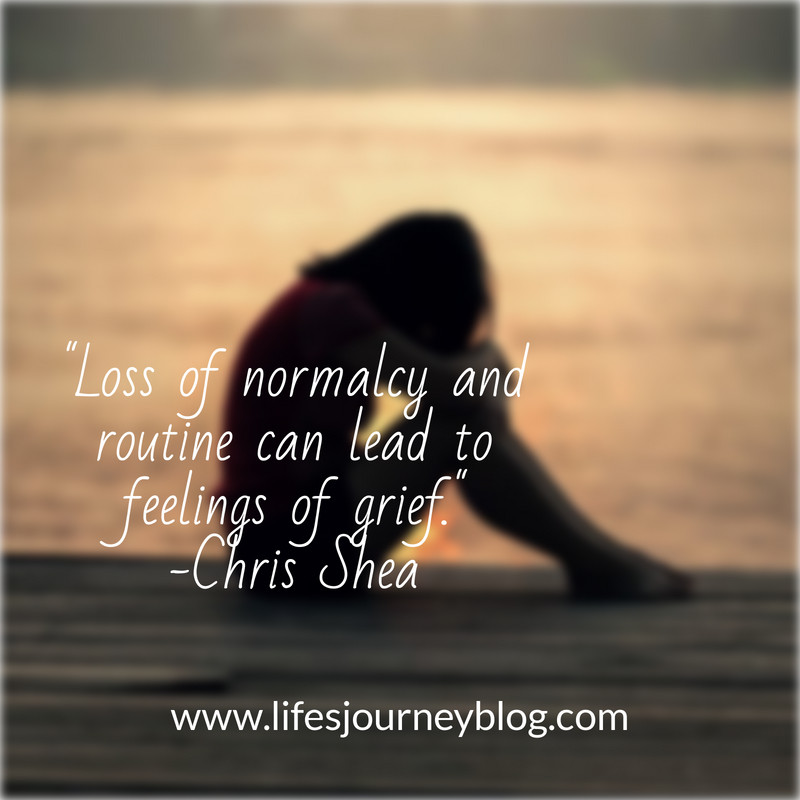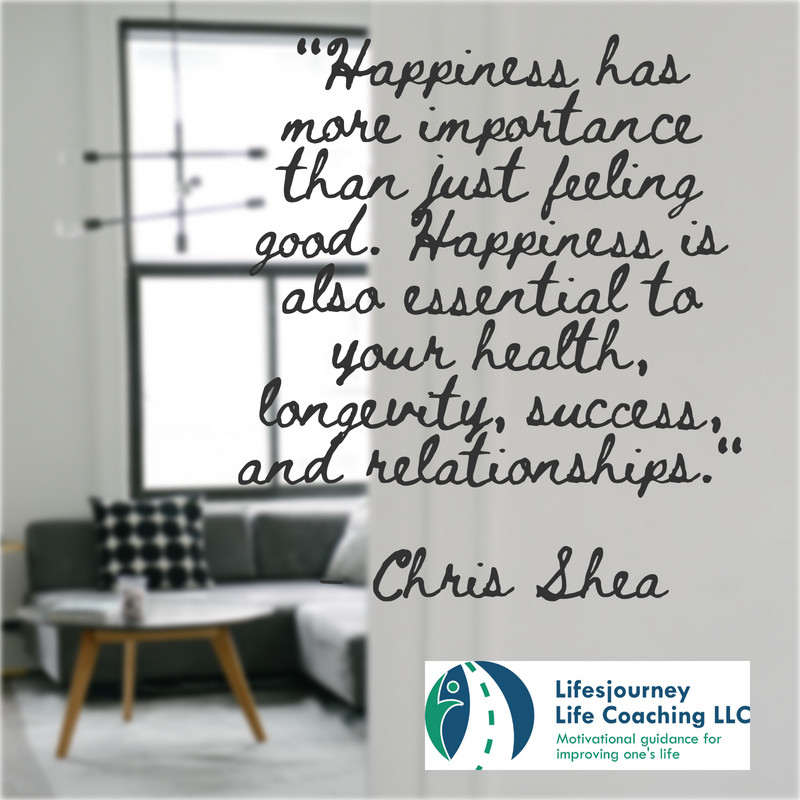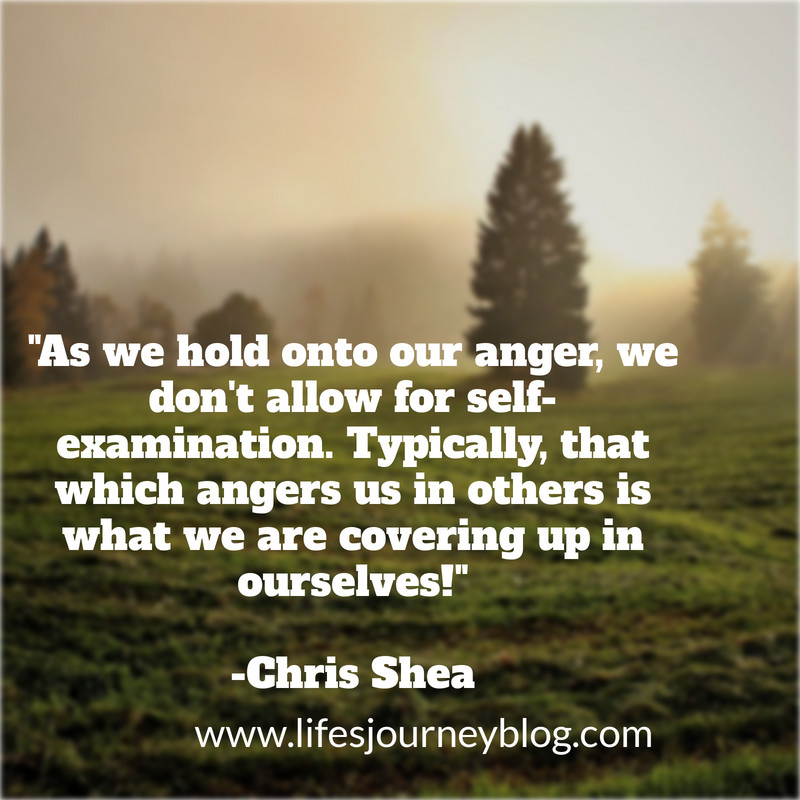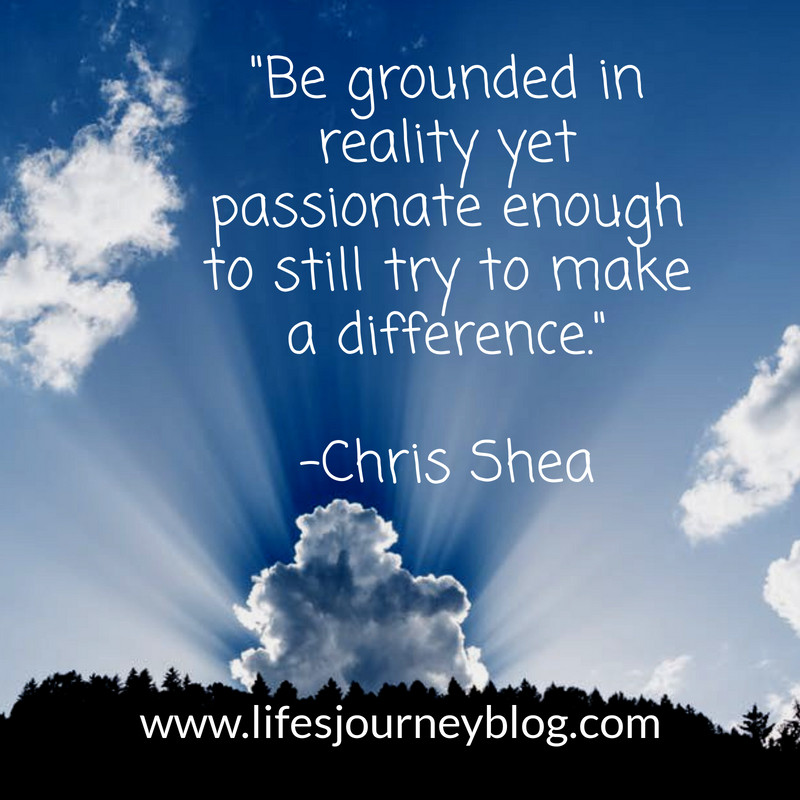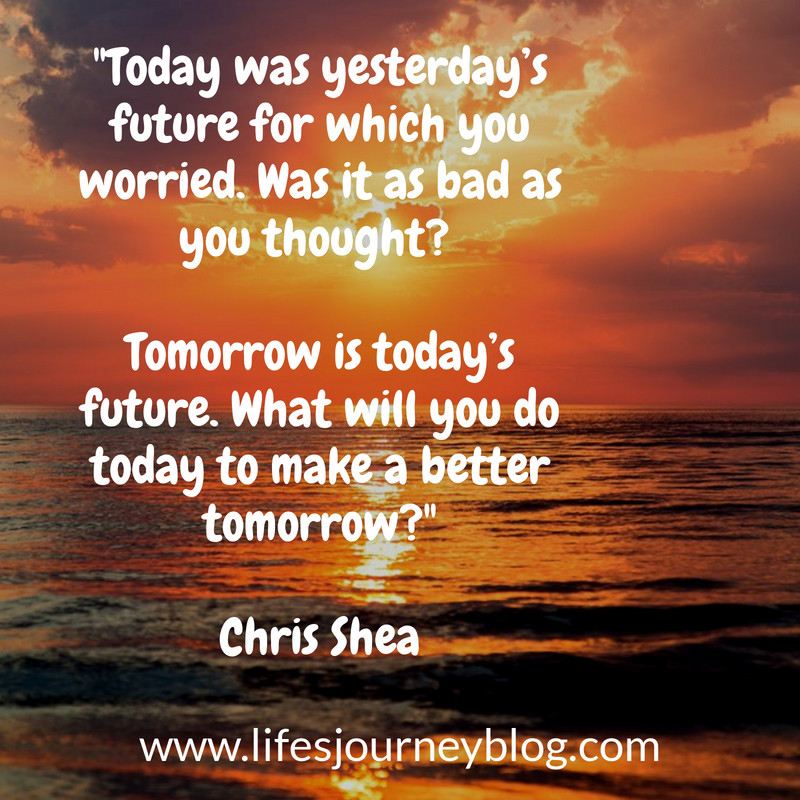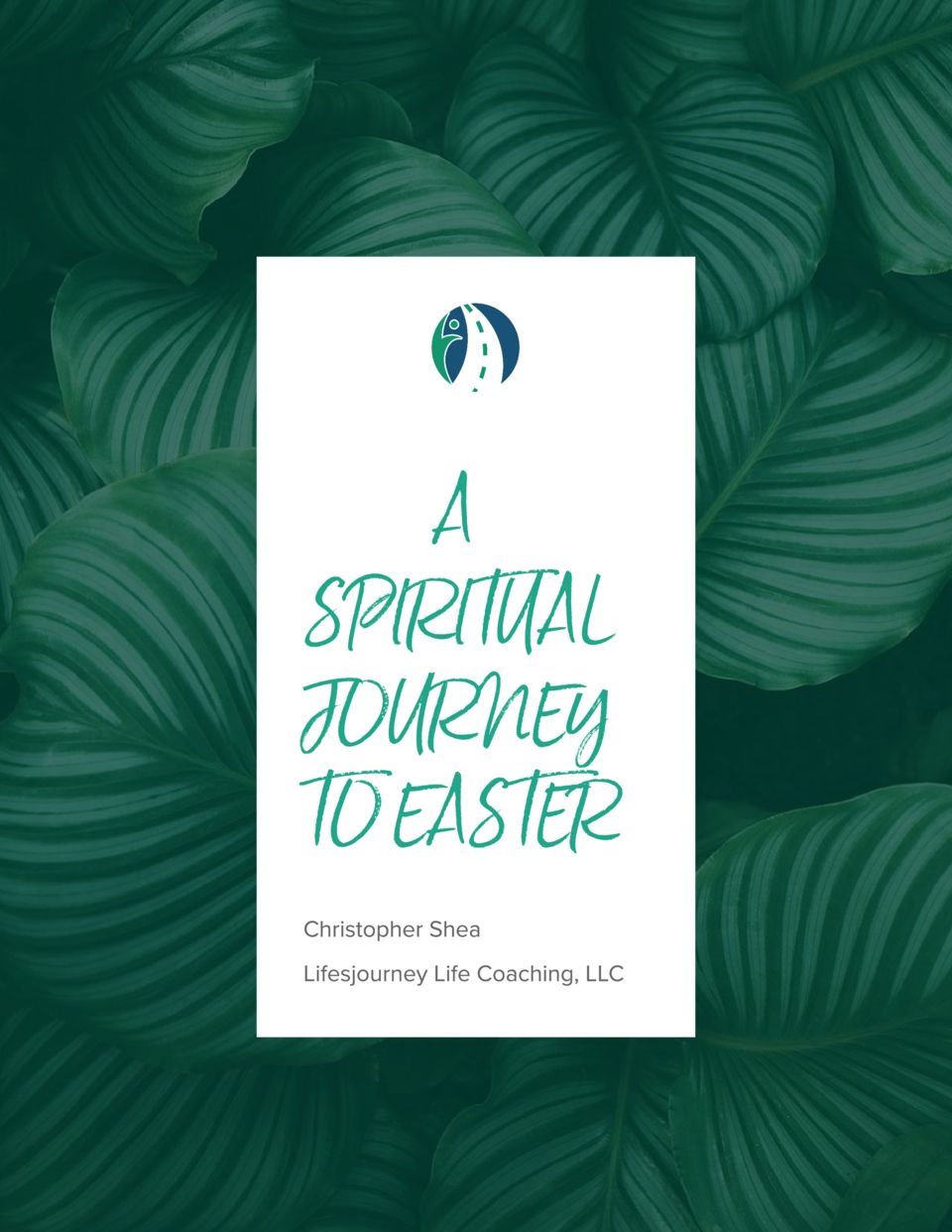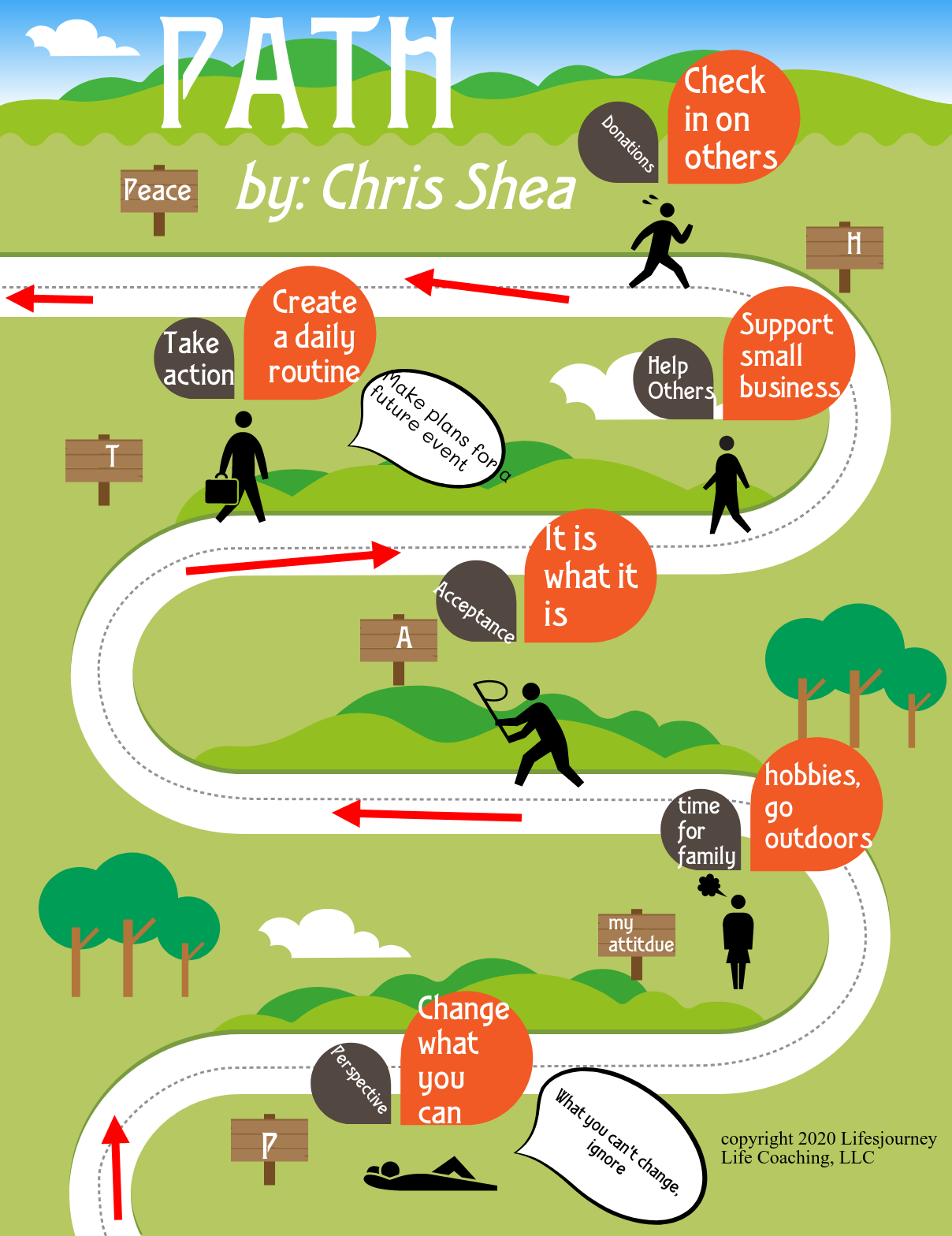Life’s Journey Blog
How To Healthily Cope With Grief During Covid-19
Grief is a typical human experience, but the COVID-19 pandemic has upended many of the ways we usually manage the loss. Here are my tips on coping healthily with your grief.
Grief is one of those emotions that many of us think of only during the loss of a loved one. And while this is the grief, many of us experience grief, and the grieving process, can happen whenever we have a loss.
During COVID-19, we have experienced many deaths, and those events elicit feelings of grief, but almost everyone has experienced loss due to the coronavirus. We have lost employment, lost freedom of movement lost ability to meet with family and friends as we used to, and lost a sense of control over our lives. All of these are losses that can lead us to feel grief.
The Mayo Clinic reports that “In addition to feeling grief over the loss of life caused by COVID-19, you’re likely grieving the loss of your normal routine.” Check out my article on this topic written a couple of months ago by clicking here.
“Not only are people now grappling with the loss of normalcy, but also with anticipatory grief, or the feeling that greater loss is yet to come.” (Very Well Mind) Some of the grief we feel comes from feeling that we are not in control and worry about future changes. Focusing on the unknown of the future causes stress and anxiety, increasing the grief felt due to our losses.
Grief affects everyone differently, and for some, grief can be expressed through depression and anger. If you or a loved one appears to be depressed or is becoming “short-fused” or angry, the root issue may be stress created by underlying grief of a loss of normalcy.
If you or someone you know is experiencing grief, try these steps for coping with your grief. They work for me.
Using mindfulness, pay attention to your emotions. Keeping your thoughts and feelings in the present moment, experiencing your current feelings, will help guide you to understand those feelings you wish to change. Then you can take control of changing those feelings.
Stay connected to people. Even though many of us are social distancing and not gathering in groups, don’t isolate. Meetings with individuals while physically distancing allows you to stay in touch, as does technology.
Practice self-care. Do actions that are positive and healthy for you. Eat well, pick up hobbies, rest, and be kind to yourself.
Feeling well takes time. Changes in your emotional outlook take time, so have patience with yourself. You will feel better in hindsight, but while going through the emotion, it feels like forever. Remind yourself to let the process take its course.
Validate your feelings. Feelings are simply our response to a situation. Feelings are neither right nor wrong. So, how you’re feeling is valid. If you wish to change your feelings, fine, work on that, but don’t judge your feelings or use phrases like “I shouldn’t feel this way.”
Grief from COVID-19 is not your fault. Your losses are yours, as are your feelings. You have control over your response to what has happened to you. You are empowered to cope with your grief, healthily.
{loadmoduleid 140}
Why Aren’t You Happy? How To Change That
Why aren’t you happy? This is a question we often ask ourselves, answering ourselves with excuses we tell ourselves. Can I be happy? Sure, you can, but are you sure you want to be happy?
I find that today, listening to the news and hearing people bickering about politics is not easy to be happy. Even if I am happy, once I hear about more violence in the country, I’m no longer happy. So why aren’t you happy? Try to be happy in today’s culture!
Fair observation. Outside forces and experiences can and do take away our happiness. Being happy isn’t always easy, but it does happen. You may want to check out a previous article of mine I titled: “Happiness Is Not The Answer But Here’s What Is.”
In that article, I wrote: “Happiness is a fleeting emotion which comes and goes. As such, happiness can’t be a life goal. This is why I don’t encourage people to seek happiness as a life goal.” My premise is that we need to focus on inner peace instead of a fleeting of happiness. But for the purpose of this article, I’m content with using the word happy.
Many times we lose our happiness due to outside factors, but I find I lose my happy feeling because of my own inner issues. We can be our worst enemy when it comes to keeping or losing our happiness. The positive side to this is that if I’m my worst enemy, can’t I also be my own best friend? Yes!
Our thoughts are actually our own creation. They may seem to pop up in our heads, but in reality, we create them. So, since we create them, we can change or delete them. A favorite quote by Dr. Judith Beck, Ph.D., is “just because I think it doesn’t mean its true.” Just because there’s a negative thought about me, doesn’t mean its a right thought. As a child, I used to have the thought I was Superman. Obviously, having that thought didn’t make it accurate. So why do we put faith in negative thinking about ourselves?
Here are my ways of keeping my happiness:
- Thoughts: Learn and believe that I’m the creator of my thoughts, and so I can change those thoughts whenever I want. If you’re not feeling happy, check your thoughts to discover what you’re telling yourself. If you’re telling yourself unhappy thoughts, then, of course, you will feel unhappy.
- Perspective: The way we view the world around us becomes our reality. If we focus our thoughts on the negative, of course, all you will perceive is negative. The more you look for the positive, the more positive you will find. And if your perspective is positive based, so will your thoughts.
- Kindness: Have you noticed that many times we are kinder to others than we are to ourselves? Learn to treat yourself as you treat others. If you are patient with others or give them the benefit of the doubt, do the same to yourself.
- Mindfulness: Practice living in the moment, feeling what you’re feeling without judgment. Learn those times when you aren’t happy, and teach yourself ways to become happy.
- Keep Going: Just when life is going great and you’re feeling comfortable, we tend to self-sabotage. We stop ourselves just before we achieve our success through the thoughts of not feeling worthy or of not thinking you really can achieve this. Don’t allow those thoughts to influence you. You made it this far, keep going.
Why aren’t you happy? It might be your own thoughts. Change your thoughts, and you can once again feel happy.
{loadmoduleid 140}
Angry At Society – how to feel peaceful not hatred
Angry at society appears to be the primary emotion of our time. As this angry feeling festers, it can lead to feeling hatred. Yes, there is also kindness found in society, and I do know people who are not angry. What can we do with our angry emotions so that we can turn them into a sense of being peaceful, and we don’t end up feeling hatred?
Angry at society? Why is there so much anger? We see it in the streets, in demonstrations, on social media, etc. I have my theories, but the focus of this article is not on the why, or the origin, of the anger. Instead, I write this article on anger from the perspective of mindfulness.
In mindfulness, we are urged to remain in the moment, non judgmentally. Following that suggestion, I don’t necessarily need to understand why someone is angry. Assuming anger is taking a person from their peace, I guide that person to shift their perspective and so take action in the hopes of returning that person to a sense of peace.
As a counselor and practitioner of mindfulness, I don’t perceive anger as either positive or negative. The feeling is the feeling; what I do with the feeling is healthy or unhealthy. So, anger in and of itself is not the issue. My perception and actions based on anger is the issue. Therefore, many people these days who are angry are not what bothers me. What bothers me is what they are doing with their anger.
Anger, as an emotion, has its place. Anger has been used successfully as a means of defense against danger, both physical and emotional. Anger, felt when we perceive a threat, produces in us an increase of the chemical adrenaline. This chemical prepares the body for a physical fight and later coping with the event’s emotions.
In society, whenever we feel that our ideas, beliefs, or opinions are attacked, our basic instinct kicks in, resulting in an angry response. Anger is undoubtedly the most judgmental of our emotions. It’s also the most moralistic, self-righteous, and repudiating. Most of us will defend, sometimes to the death, what we believe.
Attacking a person’s beliefs or opinions is akin to an attack on the person themself. Why? Because we are the thinker of our thoughts! In essence, if you attack my thoughts, you attack what I created, and in so doing, you attack the creator, me.
Anger is probably the only emotion that we consciously cling to. Think about the last time you felt happiest. How long did that feeling, in its intensity, last? And when the feeling drifted away, many of us say, “I wish it lasted longer.” Yet, when it comes to anger, when was the last time that feeling of anger simply drifted away? For many of us, we hold onto it, ruminating over and over the offense, which was done.
Why do we hold on to anger? Let’s examine what the emotion of anger does for us:
- It provides us with a feeling of power.
- It enables us to believe that we are in control of the situation.
- It confirms to us that we are right and correct in our stance.
Examining this list, why wouldn’t I want to hold onto anger? If I give up feeling angry, I may feel less powerful and less in control, and I may discover that I’m not entirely correct in my thoughts or beliefs. Yet, if I am willing to give over my power and control to a reflection of my thoughts, I have now opened myself up to self-examination!
Self-examination, one of the goals of meditation, can also be a means of growth. But self-examination can be scary as we uncover aspects about us that we may not wish to open or issues that even we don’t like. As we hold onto our anger, we don’t allow for this self-examination. In many cases, that which angers us in others is what we are covering up in ourselves!
As I stated earlier, anger isn’t the issue; it’s our reaction to anger, which can be an issue. Therefore I differentiate between what I call a “healthy anger” instead of “unhealthy anger.” For example, you witness an injustice and become angry as your belief system speaks to justice for all. In this example, your motivation for feeling anger is not self-righteous indignation or a sense to overpower someone “because I can.” In this example, your anger will most likely result in action toward resolving the injustice, whereby all parties involved will be granted a sense of peace. As peace overtakes the anger, one is willingly open to self-examination.
The unhealthy anger is that anger, which I hold in a self-righteous manner with no motivation or intention toward a sense of peace or self-examination.
The person who practices mindfulness, meditation, and self-examination recognizes within them a sense of peace. Note that I don’t speak of the “feeling” of peace, rather, the “sense” of peace. Feelings, such as anger and happiness, are fleeting; they come and go. Having a “sense” of peace is not fleeting. A sense of inner peace speaks to an awareness of oneself within your environment. We can feel angry, happy, sad, etc. while at the same time maintaining a sense of peace.
People such as Gandhi and Martin Luther King, Jr. no doubt felt anger as part of their motivation of why they acted as they did. But a reason their actions were not violent and their rhetoric was of love is that they had a sense of inner peace. This sense of inner peace allowed them to feel the anger, yet not allowing them to betray their values.
When we feel emotions and act in unison with our core beliefs, not violating our true selves, we are at peace. We may feel anger at situations or even toward specific people. Still, in maintaining a union between those feelings and our actions with our core beliefs, we retain our sense of inner peace.
Our goal is not to stop feeling angry. Instead, our goal is to learn how to respond to anger healthily. Here are my steps for healthy anger:
- Before feeling angry, practice mindful meditation and spend time in self-examination.
- When you feel anger, find your inner peace to help change your perspective to understand the situation from everyone’s viewpoint.
- Take action in union with your core beliefs and values, which will ultimately lead to the spreading of peace.
- When the situation is over, refuse the urge to hold onto the anger. Let your inner peace overtake the anger allowing yourself time to re-charge.
I agree that there is much in our world toward which to feel anger. Use the steps above to rise to the challenge of using your anger healthily.
{loadmoduleid 140}
How To Cope And Positively Make A Difference In Society
I’m re-writing this article to help me process my feelings and mental struggles with all that is happening in my country. I originally wrote this piece back in 2015, yet I feel it remains appropriate for 2020. I, and others, struggle with a response to what we are feeling as there are so many diverse feelings at the same time. How do we process, in a healthy way, that which we feel powerless over?
A conversation between the Optimist and the Realist
In my life, I strive to be an optimistic person, although, I think I end up somewhere in the middle between being an optimist and a pessimist. This middle area I like to refer to as “being a realist”. I’m fine with being a realist as I feel it keeps me grounded in what is happening around me and in the larger world; the good and the bad. Although, a problem in being a realist is there is little room for making a change to the events which are happening. The optimist sees potential for change while the realist simply sees what is.
The realist
Recently there’s been an onslaught of negative news in all of the media outlets. It seems that the more I hear and read the news the stronger my desire is to escape from it all. That’s the realist in me talking. I guess the realist in me is leaning toward the pessimistic end of the middle; a place along the scale I try often to avoid.
The optimist
The optimist in me wants to join the thoughts and conversation with the realist. As I said, I try my best to be an optimist. If the realist in me would allow such a dialogue the optimist, how might it proceed? In the present reality of the tensions in the world, what could the optimist say without sounding either naïve or like a quote from a greeting card? What does the blend of a realist with an optimist produce?
The optimist in me views the world from the mindset that every challenge can be overcome, where peace and joy always prevail. Even if we can’t imagine how that might be true, the optimist motivates us to strive for it anyway. Without at least trying, a future full of hope will never be realized.
The conversation
The joint dialogue of the optimist with the realist would take into account the difficult realities of the situations we face, yet devoid of naïve “answers”. In place of answers, we will feel a sense of hope; a hope fulfilled through practical action.
Here is what the conversation between the realist and optimist in me concluded:
- We aren’t alone. The struggles in coping with a world in turmoil are not yours or mine to struggle with by ourselves since there are many people who feel similarly. Seek out others who are feeling the same emotions as you and, instead of complaining or despairing, work together on creating practical solutions to the problems.
- We aren’t victims. A victim is a person who suffers as a result of events happening to them for which they are powerless to control. Discover the difference between what is and is not in your control. In this way, you can create reasonable expectations. Reasonable expectations allow us to actually do something resulting in our expected change. For example, it is unreasonable to make our goal that of world peace; while a goal of creating a peaceful home, work, or local community is a reasonable goal.
- Empower yourself and others. Educate yourself about the struggles and solutions tried in the past. Learn what worked and what didn’t work, figuring out why it didn’t work and what you may do differently to make it work now. Find and obtain the resources needed to carry out your goal. Our ability to work with others in finding a workable solution to problems removes the label of victim, replacing it with survivor. Although we need to be educated about the issues, it is also important to keep a balance, allowing for some news-free periods.
- Regain your power. Once we realize that we are not powerless, our desire to implement change brings about renewed strength and optimism. Recognize the power and strength that you individually, and you as a group, have. Find creative ways of using your power for the good. Do not let the power itself take over, for hubris makes one feel invincible, while in reality, even though we have power, we will not always make the proper decisions. Knowing how to learn from our mistakes is a sign of strength, for the knowledge gained from the mistake will help you to avoid that, or similar mistakes, in the future.
- Focus your energy. As I previously mentioned, our power and abilities are limited, so wisely focus your energy on those tasks which can be completed and not on those tasks you know are impossible for you to complete. No one person, or one group, can do everything.
- Empathy. As we learn about the issues affecting our world we begin to realize that many of our problems originate with us not understanding each other. We tend to view the world from our perspective and our history, failing to recognize that those with whom we may disagree are also viewing their world from their perspective and history. Finding solutions to problems presupposes that all parties agree on the nature of the problem. Empathy, placing ourselves in the shoes of another, provides us a deeper understanding of the concerns of others. By viewing the world through their eyes we will be better informed and so better prepared to find and carry out solutions, together. Empathy does not necessarily mean I agree with another’s opinion, only that I view the other’s opinion respectfully.
- Self-care. The realist in me recognizes that to accomplish all of this I will end up draining and wearing myself out. But in the union of the realist with the optimist, I recognize the need for self-care. Take time for yourself; keep up bonds with your family and friends; find activities or hobbies which do not relate to the work at hand; spend time in meditation and quiet to focus yourself.
I don’t propose these steps as solutions or answers to the problems we are currently facing. But rather as guides to keep us grounded in reality and yet passionate enough to still try to make a difference.
{loadmoduleid 140}
The New Normal – 7 Valuable Lesson Opportunities To Learn Now
The “new normal” is a phrase that has entered our everyday speech, along with phrases such as “social distancing,” “physical distancing,” or “PPE.” Due to COVID-19 pandemic, our lives have been changed. The questions are, how much longer will our lives be changed, and will our lives ever be what they were before?
Therefore, the idea of a “new normal” worries some people and causes many to feel anxious. Friends of mine, and some clients of mine, lament that life may never be how it was before the pandemic. Yes, that may be true. But I wonder if a return to normal is what’s in our best interest.
Click here for your sharable infographic about this article
When we focus on the new normal, we compare our present moment with the past of a few months ago. As I reflect on the past, I recall many positive aspects of our society. Yet, I also remember many negative aspects of our society. Might it be possible that this time of “difference” within our society can also be a time to create a “new normal”? Might this present moment be an opportunity to move into the future of possibilities?
I propose a shift in perspective so that we can take the positive elements of this present time and continue them when the pandemic is no longer an issue. Instead of a return to normal, let’s proactively work toward a positive new normal, which will, over time, simply be known as “normal.”
Here are my suggestions for valuable lesson opportunities we can learn from this new normal:
Re-define the phrase new normal
Normal is what we’re used to; for months, that routine has been challenged. Longing for normal means of longing for the past. What if we look to a “new normal” filled with possibilities?
Let go of victim thinking
These events were not targeted to you individually, even if you are affected by them. A victim is a person devoid of choices. You do have options today. Some aspects of life are beyond your control, while other aspects are in your control. Learn the difference and focus on those areas you can change.
Re-connection with family
The quarantine, for better or worse, forced families together in their dwellings. No family dynamic is perfect, but has your family grown closer? Have you eaten more dinners together or started game nights? Lack of commuting to work and fewer activities and meetings provide families more time together. How can this togetherness become our new normal?
Find your peace
Anger has a way of taking over our life, spilling onto people or events we aren’t even angry about. Our society is sharing in this everyday new normal, enabling us to better understand each other in our shared experience. Take the energy of your anger and shift it to a passion of service toward society.
Nurture friendships
I grew up before the commercial use of the internet, and before the existence of social media. I recall spending much of my time with my friends in person. During quarantine, we can’t physically spend time with friends, but we can use technology for good. Spend time with your friends via the internet, where you can see each and share in a group conversation and group activities. If this interaction with your friends is new to you, how can you maintain this new normal into the future?
Be kind to others and yourself
As society tries to cope, I find that most people seem a bit nicer and more patient. We’re in this together. Many messages we hear lately are reminders to take care of ourselves during the quarantine. This is essential daily, regardless of what is happening. In the new normal, how will you continue, every day, taking care of yourself and being kind to others?
Your experience
What aspects of this new normal would you like to keep moving into the future? What would you like to change or stay the same? Start making a list now for you and your loved ones. Also, share with us here or on social media so we can learn from each other.
I challenge us to shift our perspective to no longer look at this period from a negative attitude but to look at it from a positive outlook. We can then create a future filled with positive experiences. Don’t let these past few months pass us by without us walking away with healthy learning. Let’s proactively shape the future we want to live in.
{loadmoduleid 140}
The Future Worries Me – As It Should: Coronavirus version
Yes, the future worries me. Interestingly, a year ago, I wrote and published this article on worrying about the future. Little did I know that a year later, this topic would be most appropriate.
As we continue to struggle with the societal effects of COVID-19, the future worries me. It’s, seemingly, more unsure than ever before in our personal history. Will we return to “normal,” or will the past “normal” never be experienced again?
If we stay focused on the future, then yes, we should be worried about the future. How do we cope with this worry? Read on as I offer my four tips for dealing with the future.
None of us knows the future. Therefore, by its nature, the future is unknown. Since it’s an unknown, it tends to be scary, because I can’t prepare myself for it. Therefore, the future worries me. As humans, most of us desire to be in control of our daily lives, although, no matter how much we strive for control, much of life is beyond our control. The future is one of those areas outside of our control.
When we feel that we can’t control an aspect of our lives, then we feel “out of control.” Feeling out of control is scary itself as we worry about where we will end up if we aren’t in control. So, the future is not only an unknown, but it’s also out of our control. Actually, the future isn’t in anybody’s control!
So yes, when the future worries me, it should! THAT’S NORMAL!
When I work with clients who share their worries about the future, obsessing over it, stressing over it, I help them understand that their future feelings are to be expected. If we are to dwell in the future, meaning, keeping our thoughts focused on the future, then we will be worried and anxious. The statement that the future worries me is deeply felt. I let my clients know that although what they’re feeling is a normal response to their thoughts, if they would instead not feel worried and anxious, then they need to do only one thing – change their thoughts!
Keeping my thoughts in the future causes me to worry and have anxiety. Does it not make sense that changing my thoughts and removing my thoughts from the future would cause me less worry and stress? The standard definition of insanity is doing the same action over and over, yet expecting a different result. Therefore, the definition of sanity is doing a different action and getting a different result.
Here are my four tips for coping when the future worries me:
- Refocus your thoughts: Throughout the day, whenever you feel worried or anxious, pause a moment to notice where your thoughts are focused. Are your thoughts focused on the past or the future? If so, this is the source of your worry. The future worries me when I dwell in the future. Consciously move your thoughts back to the present moment by consciously focusing on what you are now seeing, feeling, experiencing, etc. We have control over the present moment, so keeping our thoughts focused on the present reduces our worry and anxiety.
- Change your perspective: Perspective is how you see and interpret the world around you. Our interpretation is derived after being “filtered” through how you feel about yourself. If you’re negative about yourself, you’re most likely negatively focused on the world around you, and vice versa. Changing our perspective on an issue allows us to view a different way of thinking, which may help us find a solution different than those we’ve tried before. A different solution leads to a different outcome, and therefore sanity.
- Worst case scenario: When we dwell in the future, we tend to focus on what can go wrong (TIP: a change in perspective would be changing your focus from what can go wrong to what can go right. Why must it be negative? Since I don’t know my future, why focus my thoughts on only one option, the negative option? Since I don’t see the future, isn’t it possible that it could be positive?). Since you’re already focused on what can go wrong, consciously ask yourself, “What’s the worst-case scenario?”. When you objectively and logically review what you fear as the worst case may, in fact, not even be that bad!
A few months ago, I was working with a client on this very topic. I used the example of what if a sinkhole developed right now, and this whole building went down. What’s the worst case? The client stated that the worst thing that could happen is that he dies. I asked why that’s the worst that could happen to him? Of course, he mentioned family, kids, friends, etc., but that’s not the worst case for him; it’s the worst case for them! If he dies, he’s dead, there are no more worries or concerns for him. So the worst case might be that he survives and is scared. Yes, being scared is normal. What do you do next? You try to climb out; you either succeed at it or rescuers finally get you out. Regardless, the odds of being trapped in the hole, alive, with no one coming to save us, would be rare. And if you say, “but what about the zombie apocalypse”? Well, in that scenario, I would rather be hidden in the hole. My point being, worrying about a future sinkhole will cause anxiety. Still, understanding that even the worst-case scenario isn’t that bad allows us to reduce our worry about an impending sinkhole.
- Plan for the future with a reasonable expectation: Please don’t misinterpret what I’m saying. I’m not saying that to live in the present means, we forego any future planning. Not at all! First, concerning the scenario for which you are planning, determine those areas of the situation for which you do and don’t have control over. Those areas you have no control over you need to ignore. But, those areas you do have control over, you need to make plans. Understand that the decisions you make today will impact your future plans. And, situations and events out of your control will change your future plans. This is why I say that we need to have reasonable expectations. We can make the best plans in the world, but keep in the back of your mind that they may not come true. And that’s alright. Why? The opportunities which may open up for you instead may be better than what you wanted. In the future, other opportunities may exist which don’t exist today, and there’s no way of knowing that until we live in the future’s present moment. So, make your goals, plan for your future, but keep an open mind to what that future may actually reveal.
Let this thought comfort you: today was yesterday’s future for which you worried. Was it as bad as you thought? Tomorrow is today’s future. What decisions and plans can you make today to help you in the future of tomorrow?
{loadmoduleid 140}
An Easter Spiritual Reflection Booklet
I’m pleased to share this booklet of my spiritual journey through my reflections from Palm Sunday to Easter. On each day I leave us challenges to guide us to deeper understandings of the feelings of the season which leads us to hope and inner peace.
There’s also an APP version to keep on your phone or computer. -Chris
{loadmoduleid 140}
PATH Finding Your Inner Peace And Happiness infographic
Coronavirus: How To Emotionally Cope And Reduce Anxiety
Coronavirus continues to spread around the world and the USA. This spread of the virus is causing people to suffer from anxiety and even panic. Fearing they will be affected by the coronavirus, people are changing their lifestyles, even avoiding social situations. How can we realistically emotionally cope with the coronavirus? Follow the PATH.
Coronavirus, according to the World Health Organization, is part of “a large family of viruses that cause illness ranging from the common cold to more severe diseases … Common signs of infection include respiratory symptoms, fever, cough, shortness of breath, and breathing difficulties. In more severe cases, the infection can cause pneumonia, severe acute respiratory syndrome, kidney failure, and even death.”
The idea of a virus, invisible to the naked eye, which can span the globe, is the subject of many a horror movie. Yet this isn’t a fictional movie, and people are getting ill and dying. Thus, the reality of the coronavirus gives us a reason to be anxious and scared. Our fear response keeps us safe and alive. So however you’re feeling about the coronavirus is healthy for you.
I’m not a medical professional, so I’m not writing this article on how to avoid getting the coronavirus. My reason for writing this is to guide us in finding ways to reduce anxiety about the existence of the coronavirus.
Using PATH, the program I developed, is what we’ll apply in this situation. PATH is made up of 4 interconnected strategies to help us focus our thoughts, feelings, and behaviors to best respond to the world healthily. In this discussion, I’m in no way minimizing the potential threat or the turmoil the coronavirus has already placed on too many people worldwide.
The first step in practicing PATH is to practice mindfulness. Take a moment throughout the day to recognize how you are feeling in the present moment. Regardless of what you’re feeling, acknowledge it without judging it. If you wish to feel differently, then ask yourself what you can do differently. If there is nothing at the moment you can change, then accept it and find something else you can change.
In light of this mindful meditation, we’ll now start upon our PATH:
Perspective:
Regarding the coronavirus, examine how you feel about it and what you think you know about it. Now, change your perspective by looking at it from a different viewpoint. For instance, spend time studying the virus to gain knowledge instead of false news or hype. Or you could ask yourself how this virus compares to other outbreaks we’ve experienced in the past. According to Johns Hopkins Medicine, as of February 28, 2020, there are 2,871 deaths reported worldwide, while the common flu, as of this writing, finds 12,000 to 61,000 deaths in the U.S. alone every year. According to those numbers, more people die, in the U.S., from the flu than those who have been killed worldwide from the coronavirus.
Acceptance:
Acceptance does not mean agreement or settling. It’s about viewing reality, and acknowledging what is happening, ask yourself how you will be or are impacted. In the case of the coronavirus, the acceptance is in the reality that it exists, is spreading, and potentially can kill a person. Now, in this reality, what can and can’t you control? What you can’t control, you need to dismiss from your mind since those thoughts are creating much of your anxiety. Instead, focus on the things you can control. In this situation, you can control where you travel, your personal hygiene, and keeping up to date (non-obsessively) with the latest news on the virus in your location.
Take action:
Now that we’ve changed our perspective and accepted reality, we’re prepared to take action. Based on the above two steps, what can you realistically do for yourself, your family, or your community to make a difference? In this situation, where the majority of the U.S. is not affected by the virus, can you help others to stay calm or educate them on how to respond to the threat?
Help others:
Mindfulness and finding inner peace is not about selfishness, but an outpouring of the peace we have experienced. This last step on our PATH focuses on what we can do, as a result of the above steps, to guide others to feel the peace you are now feeling. Then they too will do the same with others. Think of how different our communities would be if everyone was helping another to find peace and reduced anxiety over the coronavirus!
I know too many people have died, and many more people have been negatively affected by the coronavirus. But I also know that by keeping this virus in perspective and helping others to do the same, will benefit us in the long term.
{loadmoduleid 140}
Pain Management: How To Use Mindfulness To Find Peace
Pain management, typically utilized for those suffering from chronic pain issues, is popular for those choosing not to use narcotics for pain relief. According to a recent study mindfulness, a practice I speak of often has now been scientifically proven to help those suffering from chronic pain. As I’ve previously shared, I too suffer from chronic pain and so know how well mindfulness works for me, and how well it works for my clients.
Pain management, when coupled with mindfulness, does not take away the pain, but the focus is on learning how best, healthily, to cope with the pain. Mindfulness does not ignore the miseries of life, it allows us to embrace the pain, recognize the pain, and then deal with the pain. A goal of mindfulness is to more fully understand all aspects of life, the good, bad, or otherwise.
The definition of mindfulness that I use is the standard definition touted by the scholar Jon Kabat-Zinn: “a means of paying attention in a particular way; on purpose, in the present moment, and nonjudgmentally.” In this definition, there is no mention of focusing only on the positives in life, but to pay attention to the present moment. How I experience the present moment is what’s to be examined and lived. The present moment is the only moment in time wherein we can choose how to react, to respond, to the world around us.
A recent article from Forbes entitled “In pain? Mindfulness Can Help” written by Clary Estes talks about a research study from Yale, Columbia, and Dartmouth outlining the benefits of mindfulness in reducing pain. This has the potential to help the pain management community. The study was published in the journal “Social, Cognitive, and Affective Neuroscience” from Oxford Academic titled “Let it be: Mindful-acceptance down-regulates pain and negative emotion”. As Estes writes in the Forbes article: “What is interesting about the study is that the benefits of mindfulness extend to both physical and emotional pain and even a superficial introduction to mindfulness practices has proven to help the participant with pain management.”
Bonus: Download Chris Shea’s booklet on Life Coaching & is it for me? Click here to get it
The participants in the study practiced 20 minutes of mindfulness meditation and self-reported less pain and negative emotions as a result. The researchers are quick to note that “neurological changes did not occur in the prefrontal cortex, which regulates conscious or rational decision-making, and so were not the result of conscious willpower.”
In other words, according to the study, mindfulness practices make changes in the brain itself, not merely a change based on what we want or believe to happen. Doing meditation for 20 minutes a day actually changes our brain, causing us to improve our thoughts and behaviors.
This study reminds me of an earlier study done by Harvard and published in 2016. In that research, it was discovered that mindful meditation, done daily, creates new grey matter in the brain after only 30 days. For details on that study, click here.
So, what does all of this research mean for each of us? It means that for pain management, learning to use mindfulness and meditation will eventually change your life.
Once we accept our reality of pain and desire a different future existence, then we need to take action. We can’t sit still waiting for change to happen to us. Change happens when we take action to effect change. Do something, such as meditation or speaking with someone trained in mindfulness, which will change your current reality. While you are taking action, don’t selfishly focus on yourself, but help others in their pursuit of a different future. Together we can effect real change. Assisting others provides us with positive self-esteem, and that positive feeling feeds our continued desire to make changes in life. As humans, we are communal creatures, so in helping others better themselves, you also help yourself.
{loadmoduleid 140}

